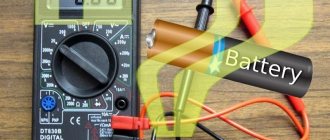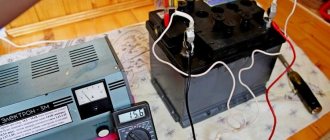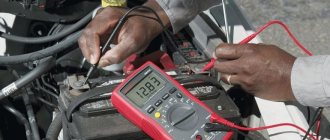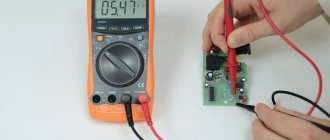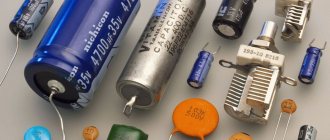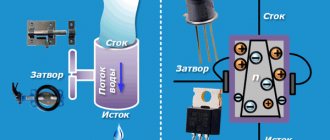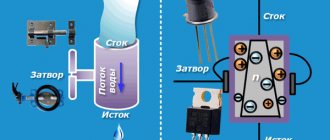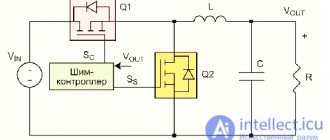AA batteries are still widely used as a source of autonomous power in television remote controls, children's and adult toys, watches, radios, flashlights and other household appliances. The problem is that this is a disposable element that cannot be recharged and must be disposed of at the end of use.
However, in practice, everything does not look so simple. The thing is that, as a rule, one battery is not enough to power modern household devices, and they discharge very unevenly.
In this case, most often all power sources have to be changed, since consumers simply do not know how to find out about the remaining charge level of an individual battery. Therefore, in the homes of Russians, a large number of these batteries usually accumulate, which seem to be a pity to throw away, since some of them still have a solid service life for use in low-power devices.
It is not difficult to correct this situation. After all, this article outlines four real ways in which an ordinary consumer can find out everything about the charge and capacity of any AA battery in a few seconds.
Methods for checking with a multimeter
One of the main areas of application is checking the functionality of the battery and its charge level. To do this, the testers use the functions of a voltmeter (determines voltage) and ammeter (measures current). The procedure consists of several stages that are performed sequentially.
Test without loads
The first stage is aimed at determining the level of residual voltage in the battery. If it is minimal, a subsequent charge check is not practical. A low residual voltage indicates that the galvanic cell is practically discharged and the energy resource will soon run out.
How to check the battery charge without load:
Read also: What is a parterre lawn?
- Turn on the voltmeter on the tester and set the measurement limit at 20 volts.
- Place the multimeter probes on the contacts on the sides of the battery. The red contact should be fixed to “+”, while the black one is applied to “minus”.
- Take readings from the tester screen. It should be from 1–20 V. If the indicator is less than 1 V, the battery can be sent for recycling, as it is inoperative.
Batteries with a residual voltage above 1.35 V can be used to operate any compatible electrical appliance. The service life in this case will depend on the capacity of the element and the level of energy consumption of the device.
If the residual voltage of a finger cell (the common name for AA batteries. For AAA batteries the name pinky) is less than 1.2 V, it can be used for undemanding electrical appliances. For example, they can be inserted into a watch, remote control, or humidifier.
Test under load
Most experts consider testing batteries without a load to be incomplete. Using a multimeter, you can determine the charge of an element by first subjecting it to a load. A small flashlight bulb is usually connected to load the galvanic cell. LED strips are not used for these purposes due to their low resistance.
The load should be between 100 and 200 mA. This indicator is common for most low and medium power electrical appliances.
It must be remembered that you cannot measure the charge on a disposable battery using a multimeter. This function is designed to test reusable batteries rather than disposable batteries that must be replaced frequently. However, using a tester, you can determine the suitability of a battery for subsequent use, so the measurement is carried out under load.
How to measure capacitance
The multimeter can also be used as a tester to measure battery capacity. The battery capacity can be measured using a test battery discharge. To check the capacity, you will first need to fully charge the battery. Then you need to make sure that the battery is fully charged by measuring the voltage and density of the electrolyte.
Next, you need to connect a load of known power, for example a 24 W incandescent lamp, and note the exact start time of this experiment. When the battery voltage drops to 50% percent of the previously set reading of a fully charged battery, the light should be turned off.
Capacity measurement, which is expressed in a/h, is carried out by multiplying the current in the circuit with a connected load by the number of hours during which the control discharge of the battery was carried out. If you get a value that is as close as possible to the nominal a/h value, then the battery is in excellent condition.
How to check a Krona battery with a multimeter?
The serviceability of the crown battery is quite easy to check with a tester. To do this, simply connect the wires of the measuring device to the battery contacts and look at the device screen.
Checking electric batteries with a multimeter under load
The remaining elements are retested. Let's now figure out how to check the battery capacity under load. To do this you need to proceed as follows:
- Connect the multimeter probes to the contacts of the battery being tested.
- Connect the load element in parallel and wait 30-40 seconds.
- Take the result.
Depending on the readings of the device, the measured elements need to be sorted. Batteries with a remainder of 1.1V or less can be safely scrapped. Products, when tested by the device, showed up to 1.3V, can be used in remote controls. If the element under load shows 1.35V or more, it is fully operational.
Non-standard methods
As a child, the most versatile test was to try the drums. Pinching means it is still charged.
The crown is especially convenient in this regard.
The tongue of a normal healthy person is not suitable for fry. Plus and minus are too far apart.
At one time, Duracell models with a special strip with a charge level indicator were quite popular.
It was enough to press two buttons and the strip would be painted in different colors, showing the remaining capacity.
In fact, it did not measure any capacitance. This strip is made of thermal ink and changes color depending on the temperature.
The welder will not let you lie.
Craftsmen often cut this sensor out of unusable batteries and use it for its intended purpose. Nowadays, for some reason, such devices are quite rare.
Another original way of checking is the compass method.
Bring the compass to the battery and slide it along the body. If the arrow is directed strictly along one axis and does not deviate in different directions, then there is still a charge.
The red part of the arrow should point towards the minus, the white part towards the plus.
The further the arrow moves, the less charge remains in the bank.
Measuring instruments
To check the performance of the battery, several devices are used and a number of simple manipulations are performed:
- A multimeter is an affordable and convenient device that allows you to determine the condition of the battery with acceptable accuracy.
- A load fork is a device that allows you to simulate the starting load on the battery when starting the engine and at the same time measure the voltage drop at the battery terminals.
- A hydrometer is used to check the density of electrolyte in battery banks.
- A specialized window on the battery case is a color indicator of the charging status of maintenance-free and low-maintenance batteries. Green color indicates 100% charge, white indicates low electrolyte level, and black indicates the need to charge.
Flashlight
The easiest way to test any type of battery is to insert it into a known-good device. Most often a flashlight.
It has a good current consumption and in the event of a battery failure, everything will immediately become clear.
The approximate degree of charge or discharge is determined by the intensity of the light bulb or LED. For accurate measurements you cannot do without a multimeter.
Useful tips
Here are some recommendations regarding the use of batteries and their disposal:
- Do not delay in checking and sorting batteries accumulated at home. If new batteries are unavailable or there are insufficient quantities, you can temporarily use tested ones if necessary.
- Dead batteries in a household appliance do not need to be completely replaced. Typically, their discharge does not occur simultaneously, and the test will identify batteries that can be used further.
- Do not store unusable batteries at home and, especially, do not keep them in the equipment case. Electrolyte often leaks from them, and this leads to damage to nearby things.
- Do not attempt to damage the battery housing in any way - the liquid contained in it (acid or alkali) may contact your skin, causing a chemical burn.
In addition, used batteries should not be thrown into trash bins. The electrolyte they contain is harmful to the environment, so batteries must be disposed of in places specifically designed for this purpose.
Basic recovery methods
There are quite a few recovery methods, but if your phone is more than one year old, none of them will bring long-term results. Malfunctions can be divided into two main categories:
- Physical aging of the device and loss of battery capacity.
- “Deep discharge” of the smartphone, making it impossible to use the standard charging adapter due to insufficient voltage on the controller.
Modern lithium batteries cannot be refurbished in the same way as older alkaline batteries. If the battery has already expired and has seriously lost capacity, it is recommended to replace it with a new one. Below is how to restore a completely dead phone battery.
Important! All methods give only short-term positive results, and the best solution in most cases is to purchase a new module.
What to remember when taking measurements
Please note that it is impossible to accurately determine the battery charge with a multimeter. Using a tester, you can verify its performance and find out what power it has, but this does not allow you to draw reliable conclusions about its capacity. For this test, only rechargeable batteries are used.
It is strictly not recommended to check leaking batteries with a multimeter. Such a galvanic cell is not subject to subsequent use and must be disposed of. Moreover, damaged disposable and reusable batteries can be dangerous because they contain caustic substances that can damage the skin and mucous membranes.
It is necessary to measure the battery capacity with a multimeter in a dry place. It is strictly not recommended to use the tester at high humidity. The device must be located on a flat and stable surface.
When measuring the voltage in an element without a load, you cannot close the circuit for a long time. This may render the batteries unusable for future use. On average, the measurement lasts 0.5–1 second. This is enough to read the reading from the multimeter screen. It should also be noted that some types of multimeters are not designed to work with batteries and low-power batteries. Therefore, before work, you need to make sure that the measuring device is compatible with a certain type of element.
Via LED
CR2032 coin cell batteries (3V) are conveniently controlled by a small single LED.
You can get it from almost any Chinese toy that flashes, glows and shimmers in different colors. For example, from a car or a doll.
Find the positive and negative terminals of the LED and touch them to the battery compartment, like this.
How to find more and less on such an LED? The leg on which the large pot is located is a negative sign. Where there are few advantages.
Error Please note that red LEDs may have the opposite effect!
If you reverse the polarity, of course, nothing will burn out, only the LED will not light up. Those batteries that barely glow can be safely thrown away, even if they showed good results when measuring voltage.
In this case, the red LED is very current critical. And where green, blue and others light up, red may not work!
Therefore, when the red light is on, the battery is definitely healthy.
Types of batteries
Portable batteries differ both in operating principle and in appearance. Main types of batteries:
- Finger (size designation AA);
- Pinky (size AAA);
- Large cylindrical (size D);
- Medium cylindrical (designated C);
- Krone type (shape - parallelepiped);
- Flat (shape - flattened parallelepiped).
All cylindrical types of charge storage devices have an operating voltage of 1.2 to 1.6 volts. The voltage of Kron type elements is 9 V, and flat 4.5 V. The performance of the element depends on the load to which it is connected.
Factory and homemade battery testers: review of models
Chinese industry has launched a mass production of cheap electronic devices that make it possible to quickly assess the real condition of any galvanic element. It is enough to insert it into a stationary socket and the test result will immediately be displayed on the display.
The cost of such testers does not exceed a few dollars, and delivery is free.
View more details and order tester BT-168D
As an example, I show the BT-168 tester. Its scale is made of colored sectors, indicating the current state of the current source. The position of the arrow indicates the remaining charge:
- green - normal;
- yellow - acceptable;
- red - for scrap.
A similar model of the BT-168D tester works the same way, but shows the voltage value at the terminal terminals of the current source in volts. A reference table for decoding the values is available on the back of the case.
The universal battery tester has similar capabilities.
Its design and appearance can be made in various ways to test all types of existing batteries.
However, the internal structure of all these devices is approximately the same: an electronic board with a chip and configuration elements.
I suggest watching a more detailed overview and capabilities of such devices in the video of the owner of “China Good Bai” using the example of a tester for batteries of C, AA, AAA, D, N, 9V formats.
I understand the desire of some home craftsmen to do everything with their own hands. I am publishing the next section for them.
Action check: a reliable way
If you don’t have a multimeter, you can use any device that runs on a battery. This could be an LED lamp, a motor or something similar that consumes a small voltage.
PHOTO: To check, you need to connect the contacts to different poles of the battery. If the battery is working, the device will operate evenly for the couple of minutes that the test lasts
If the battery has a weak charge, the lamp will glow dimly intermittently, and the motor will spin, slowing down.
Multimeter functions
A multimeter is a portable multifunctional electrical measuring instrument. It is also called a tester; it is easy to use and useful in everyday life. The tester can be found in almost every home. The device is small, lightweight, portable, and runs on a Krona battery.
In the minimum set it includes the functions of a voltmeter, ammeter and ohmmeter.
A multimeter will help:
- check the serviceability of any electrical equipment;
- test the diode or transistor;
- find the area of damage to the electrical wiring;
- measure the voltage in the network;
- ring - measure the resistance value;
- find out the voltage frequency;
- determine the battery capacity;
- measure the voltage in the battery
and do much more.
Checking the battery charge
How to check battery capacity with a multimeter
Check the power supply using digital electronic multimeters and analog voltmeters. The use of the first measuring instruments is more popular and widespread, since multimeters are low cost, easy to use and maintain.
Checking the charge without load
The power charge without load (in the so-called “idle mode”) is measured as follows:
- The multimeter regulator is set to DC voltage measurement mode;
- Selectable measurement limit up to 20 V;
- Observing the polarity, the probes of the device are applied to the poles of the battery (red - to positive, black - to negative);
- The multimeter will show the charge (voltage) value with a small error on its display in 2-3 seconds.
Checking the charge with a multimeter
On a note. Before measuring the battery charge with a multimeter, you need to make sure that its poles are not dirty or covered with a film of oxides. All visually noticeable dirt is removed with a cotton swab soaked in alcohol or a clean rag. It is also necessary to use a device whose serviceability and measurement accuracy have been tested by time.
The value obtained during measurement is compared with the one indicated on the food. So, for example, if the voltage value of an element of the AA form factor is less than 1.0 V, then this means that it is discharged and is not suitable for further use.
Checking electric batteries with a multimeter under load
Checking the batteries with a multimeter is done as follows:
- A load element is connected in parallel to the power being tested;
- Observing polarity, multimeter probes are applied to the poles;
- After approximately 35-40 seconds, the actual value of the power charge under load is read from the device display.
The performance and possibility of further use of power are determined depending on the value obtained from such a measurement. So, for example, if the voltage of an AA type finger cell is less than 1.1 V, it is considered discharged and can be disposed of; batteries with a voltage of 1.2 to 1.3 V can be used in remote controls and wall clocks. Power supplies with a load voltage above 1.35 V are considered fully charged and suitable for their intended use.
Checking batteries by measuring current
Another way to check a battery with a tester is to measure the current.
A similar measurement is made as follows:
- The red probe of the device is connected to the connector for measuring direct current (socket marked “COM”);
- The control knob of the device is set to the maximum value of the measured direct current for this multimeter - 5 or 10 A;
- The battery is held in the hand and the black probe is applied to the negative pole;
- The red probe is touched to the positive pole for a few seconds, remembering the final value that the device will show.
Discharged supplies will have a measurement result of less than 1.7 A.
How to check a battery without instruments
The simplest alkaline or alkaline AA battery can be checked for state of charge without using various measuring instruments as follows:
- The battery is taken by the upper part with the positive terminal with two fingers and raised above the table surface by 2.5-3.0 cm;
- Unclenching your fingers, let the element hit the negative pole on the table surface. Charged elements make a dull sound when they come into contact with a hard surface and do not fall on their side, remaining in an upright position.
You can also find out how discharged a particular battery is by inserting it into the flashlight. By the brightness of the LEDs, you can judge how charged the element inserted into it is.
How to check a battery with a charge indicator
Some battery models have a special built-in charge indicator - a strip with a certain number of luminous segments made of thermal paint.
Charge indicator
Checking the charge of a model with such a device is carried out as follows:
- Two fingers of different hands touch the round contact pad for the positive one and the semicircular one for the negative one;
- By filling the indicator strip with luminous segments, the full charge of the element is judged.
Checking without devices and tools
Left without a multimeter and without a load plug, you can still check the performance of the battery. Even in the field.
There are a huge number of thematic videos on the Internet in which experienced and not so experienced motorists give useful tips on servicing batteries. But the problem is the same everywhere. Almost every such video begins with words like “take a tester” or “using a multimeter.” What should a person who doesn’t have them do? Moreover, the battery turned out to be maintenance-free. I'll say this. You can't give up. But there is something you can do. And even necessary.
Let's start with the fact that many modern cars are equipped from the factory and are equipped by the car owners themselves with so-called maintenance-free batteries. But this fact should not stop you from diagnosing it.
Manufacturers have provided in advance for the user (driver) to monitor such batteries and their performance. For this purpose, appropriate built-in indicators are provided, as well as systems for self-diagnosis.
To determine the condition of such batteries, you just need to look at the instruction manual. That's all.
And if you want to check the battery for serviceability, but you don’t have any special instruments, there is a great way. You need to do the following:
- Look at the external condition of the battery. All those procedures that we talked about above;
- If there are contaminants, get rid of them;
- You also need to tighten all the terminals if they are loose and tighten the fasteners;
- Do not start the engine;
- At the same time, turn on all the lights that are available in the car;
- Wait 5 minutes;
- If the intensity of the glow has not changed, everything is fine with the battery.
You yourself can clearly see that there is nothing complicated in this procedure. And we didn’t need any special measuring instruments.
I don’t argue that these are conditional data, which cannot be used to fully assess the performance of the battery in a car. But sometimes such measures are enough. So at least you know that you can drive a car, and the headlights will not turn off in the middle of the night on the road.
The car itself usually lets you know that there are problems with the battery. At first the symptoms are barely noticeable, but gradually the situation only gets worse. If you see that the engine is difficult to start, there is a high probability that the battery is at fault. They are faulty or severely discharged.
The battery is an extremely important component of almost any vehicle. Therefore, monitoring its performance is the sacred duty of every motorist.
Do you know any non-standard methods for checking batteries without using different testers and special equipment? If yes, be sure to write about them in the comments. Let's discuss everything together.
That's all I have for today. I hope you found it interesting and even fun at times.
Thanks to everyone who is with us! Subscribe, leave reviews, ask questions and don’t forget to invite your friends to join us!
( 4 ratings, average: 4.50 out of 5)
Did you like the article?
Subscribe to updates and receive articles by email!
We guarantee: no spam, only new articles once a week!
Source: pricep-vlg.ru
Check depending on battery type
Galvanic batteries are classified depending on their size. Therefore, the algorithm for performing measurements using the tester may differ.
In most household devices, finger and little finger galvanic elements of an oblong cylindrical shape are used. AA and AAA elements have a nominal voltage of 1.2–1.5 V. The output contacts on the finger elements are located on different sides of the housing. When using a multimeter, the red probe is applied to the positive terminal, and the black probe is applied to the negative terminal.
Another common type of battery is “Krona”, the rated voltage of which reaches 9 V. Testing with a multimeter is carried out in accordance with the described instructions, but several points must be taken into account.
Among them:
- on Krona batteries, the contact outputs are located on one side of the case;
- when measuring with a multimeter, an acceptable indicator is a result above 9 V;
- if the DC voltage in the element is less than 8.7, it can be sent for recycling.
You can also use a multimeter to test button batteries, which are often used in household electronic devices. It must be taken into account that when determining the charge of such an element, it is necessary to read the current, not the voltage.
The multimeter probes are applied to the corresponding contacts of the element. On tablets, the minus is the flat side, while the plus is the convex side. When taking measurements, the maximum value of the ammeter on the tester should be 10 A. The entire procedure lasts 0.5–1 second, no longer, since otherwise there is a risk of damaging even a new battery.
For undemanding devices, the current strength of the tablet will be 1 ampere or more. For more demanding types of equipment, for example, cameras, cameras, photo frames, 4–6 A will be required.
Short circuit current measurement
For the next test method, the multimeter switch must be set to the position - DC current measurement (10A).
The position of the probes also changes. Black stays in the COM jack and red moves to the current sensing jack - 10A MAX.
To measure current, the black probe is applied to the minus of the battery, the red one to the plus.
In fact, with this measure, a short circuit occurs and the battery is short-circuited.
Which is not recommended. For normal measurements, it is desirable to have an additional resistance of at least 10 ohms. Probe cables are much less important.
Error! Therefore, this method cannot measure large currents for too long.
Even the cheap Chinese model has a warning sign (no more than 10 seconds with a 15-minute break).
Galvanic cells do not like this treatment. If the battery is already slightly discharged, after several such “short circuits” it will have to be thrown away.
it's like a joke with a hedgehog and matches
